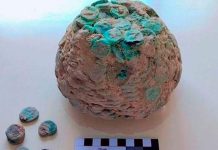Legal and Ethical Issues in Salvaging Titanic Wreck:
The Titanic has engaged the huge attention of a rapt world audience for more than a century now. As the most famous and historic of all shipwrecks, it is enshrouded in a cloak of mystery and debate. The traumatic effect that the loss of the massive ship had on the public at the time of the disaster has not abated, making the Titanic seem almost eternal.
Although many plans to salvage the ship and its cargo were developed over the hundred years that the Titanic lay undiscovered 4 km below the ocean surface, RMS Titanic did not discover until 1985 that salvage became feasible, when Robert Ballard of the Oceanographic Institute in Woods Hole, Massachusetts, discovered the ship’s exact location as part of a joint American-French research team.
Hence, serious issues were directly raised over the controversial question of salvage rights. The main issue is that the shipwreck lay in international waters. Because there is no legal protection in international waters for the Titanic wreck of historical or archaeological significance.
In this type of case, shipwrecks are subject to salvage law, which stipulates that the first salvor on the site has exclusive rights to the site. Thus, other salvors are prevented from accessing the site if expeditions are being planned and conducted to recover artifacts from the wreck. Robert Ballard could not legally claim salvage rights to the Titanic wreck since he uncovered it while working on a government research project.
The French Oceanography Institute, which was the French component of the joint American-French research team and had received little acknowledgment for its contribution to the discovery of the wreck, had no such constraints, however. It was soon involved in the formation of the commercial salvage company that was to become RMS Titanic, Inc.
More than 1,500 people, including rich and poor, representing over 20 countries, perished in the disaster. The ship had broken into two separate parts, with the stern section lying about 804.5 m beyond the bow portion. A huge field of debris covers the ocean floor between the two pieces. RMS Titanic, Inc. stated early on that they only intended to record the site, recover, conserve, preserve, and tour just those artifacts recovered from the debris field. It keeps the collection together rather than selling it to individual buyers around the world.
The culmination of the project would be a Titanic Memorial Museum, where all the artifacts recovered would be kept. RMS Titanic, made available for sale to the general public, authenticated coal from the seabed. The reaction was very strong and instant. Individuals and organizations from around the world fervently opposed the idea of salvage work being done on the Titanic.
They were claiming that the Titanic wreck was a “gravesite” and should be left undisturbed as a memorial to those who died. These organizations, the Titanic Historical Society (the largest and most senior of the Titanic enthusiast bodies) of the United States and the Ulster Titanic Society of Northern Ireland, “where the ship was built,” set themselves against the salvage operation.
Robert Ballard, who firmly believes in the sanctity of the site, worked to get a United States federal law passed making it illegal to buy or sell artifacts from the site in the U.S. Other individuals and institutions allied themselves with the salvage if it was done well and in good taste.
They were really concerned that artifacts would be sold and dispersed if a company other than RMS Titanic, Inc., were the salvors dealing with the Titanic Wreck. The unscrupulous salvors interested only in pure commercial profit would not employ the same sort of painstaking recording, recovery, and conservation methods that RMS Titanic used to save materials recovered during the four research and unearthing expeditions conducted between 1987 and 1996.

Stimulatingly, although the Ulster Titanic Society opposes the salvage of the Titanic wreck, the society believes that if salvage work continues, RMS Titanic, Inc., is the best salvor to do the job. In the face of serious international and hostile criticism from the public, maritime archaeologists, and museum professionals, the National Maritime Museum of Greenwich joined RMS Titanic in a partnership to present the first exhibition of artifacts recovered from the wreck.
In 1994–95, around 150 of the several thousand artifacts recovered from the debris field were displayed in an exhibition titled “Wreck of the Titanic.” The exhibition was billed as the “largest-ever public display of Titanic artifacts” and was a huge success in terms of audience attendance and media coverage.
More than 500,000 visitors saw the show. The exhibit brought the museum into direct conflict with the ICMM (International Congress of Maritime Museums), of which it is a member. The museum and ICMM disagreed about salvors and salvage law.
The ICMM was concerned that the exhibition included artifacts recovered from the site since 1990 and “relics raised illegally or in inappropriate circumstances after 1990. They are considered out of bounds for ICMM-member museums.”1 Richard Ormond of the National Maritime Museum claimed that “the objectives of the exhibition were to demonstrate the technical achievement of finding and exploring the site.
That shows conservation techniques and the extraordinary survival of objects on the seabed, and it examines the controversy in detail. The museum stressed that none of the artifacts on display came from the hull of the ship. Which was the true “gravesite” of the victims? Michael McCaughan, a Titanic expert from the Ulster Folk and Transport Museum in Northern Ireland, visited the exhibition and felt that the “150 artifacts were displayed sensitively in a variety of contexts.
Fundamentally, this was not an exhibit about the past, but about the present and its appropriation of the past. The exhibit was not a requiem for the dead, nor did it address the metaphorical meaning of the Titanic. Rather, it was the enshrinement of the triumphs of deep-sea exploration and the stimulating wonders of conservation laboratories.
Regardless of the controversy and arguments over the salvage work conducted by RMS Titanic, Inc., there is no doubt whatsoever that the company’s work is legal. RMS Titanic, Inc., was granted salvor-in-possession rights to the Titanic Wreck by a U.S. federal court in 1994.
Despite a challenge, these rights were reconfirmed in 1996, giving the company exclusive rights to own artifacts recovered from the wreck. The 1996 judgment took into consideration the site recordings, artifact conservation, and commitment of RMS Titanic, Inc., to keep the artifact collection together for public display.







